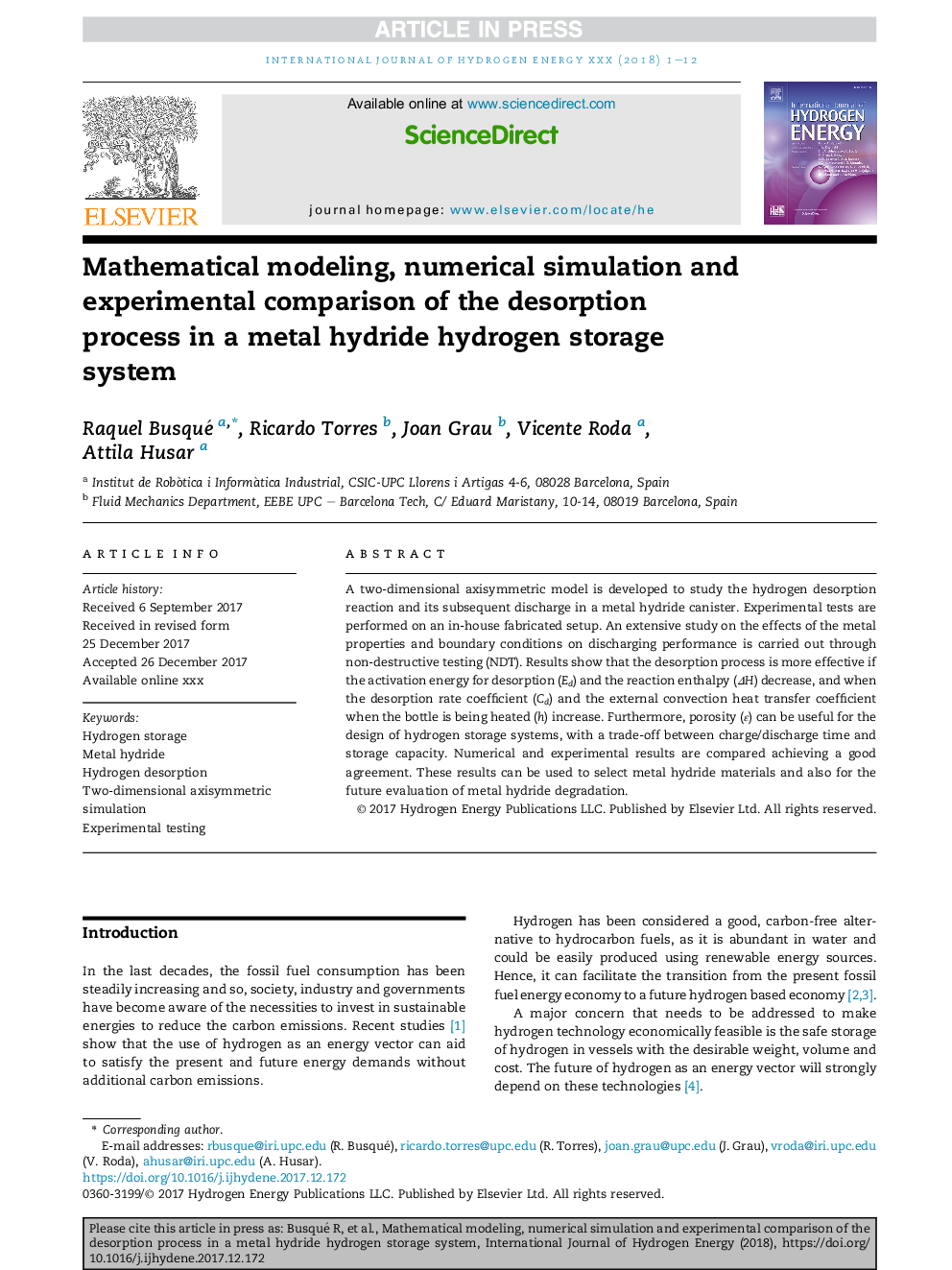| Article ID | Journal | Published Year | Pages | File Type |
|---|---|---|---|---|
| 8948311 | International Journal of Hydrogen Energy | 2018 | 12 Pages |
Abstract
A two-dimensional axisymmetric model is developed to study the hydrogen desorption reaction and its subsequent discharge in a metal hydride canister. Experimental tests are performed on an in-house fabricated setup. An extensive study on the effects of the metal properties and boundary conditions on discharging performance is carried out through non-destructive testing (NDT). Results show that the desorption process is more effective if the activation energy for desorption (Ed) and the reaction enthalpy (ÎH) decrease, and when the desorption rate coefficient (Cd) and the external convection heat transfer coefficient when the bottle is being heated (h) increase. Furthermore, porosity (ε) can be useful for the design of hydrogen storage systems, with a trade-off between charge/discharge time and storage capacity. Numerical and experimental results are compared achieving a good agreement. These results can be used to select metal hydride materials and also for the future evaluation of metal hydride degradation.
Related Topics
Physical Sciences and Engineering
Chemistry
Electrochemistry
Authors
Raquel Busqué, Ricardo Torres, Joan Grau, Vicente Roda, Attila Husar,
